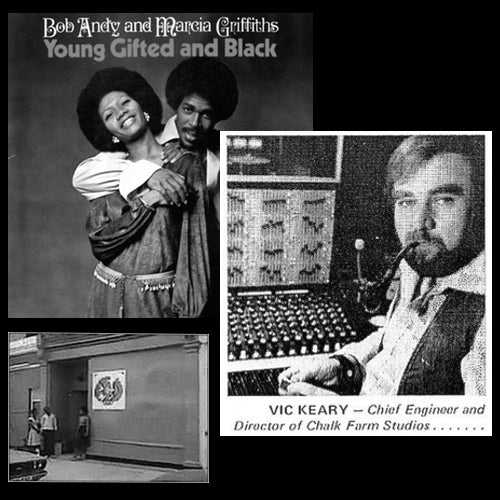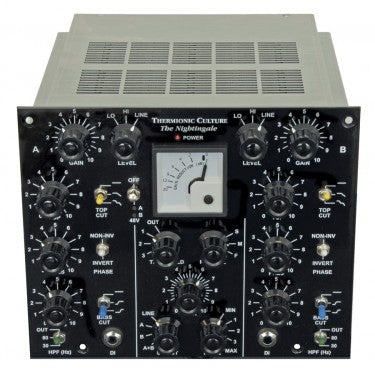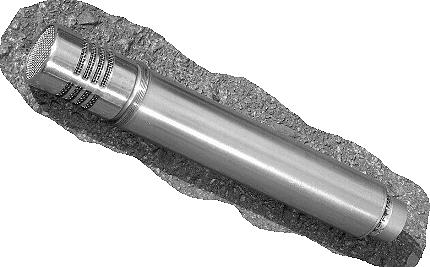Designer Talk : Vic Keary | Thermionic Culture
Vic Keary is the man behind Thermionic Culture and their amazing all valve based designs. Having previously worked at Lansdowne Studios, where he modified Lansdowne’s EMI valve desk he also worked on Desmond Deckers ‘ You can get it if you really want ‘.
After leaving Lansdowne he then ran a series of successful London studios such as Maximum Sound (which he sold to Manfred Mann), Chalk Farm and later Chiswick Reach.
Chalk Farm was THE place for Reggae and Ska in the 1970’s citing Bob and Marcia’s ‘ Young, Gifted and Black’ as their first success, and it was using his own valve desk design based upon the EMI Redd console at Lansdowne.
After leaving Chalk Farm and later Chiswick Reach he co-founded Thermionic Culture with the idea to share his unique and innovative valve designs, which he is still avidly doing today.
I spoke to Vic about what Thermionic Culture means to him, and where it all started…
So Vic, how hands-on are you these days in design ?
I’m pretty much totally hands on still. I want things the way I want them, – I’m fully into the design side, there is an old mate of mine Mike Craig, who did some designs for me, and is doing some with me currently who I’ve worked with since the 60’s – he’s somebody I trust. We build stuff as far as we can with point to point, as I do feel that point to point wiring sounds better, as we have a very good team of 8 people here. I’m not a person to compromise on quality.
As you were originally designing your own valve desk, what took you from the desk into outboard ?
Well, when I was in the studio business I used loads of compressors because I was really into compression like Pye, UREI, we had a Fairchild 670 and we had a Sean Davies limiter which was rather good but I could never quite get the sound I wanted. Which was if you like a quite gentle compression. I always felt that, yes compression should work, but it shouldn’t over do and actually you shouldn’t be able to hear it that much.
If somebody is singing through a compressor you shouldn’t really hear the compression working. It should make the vocal sound louder, but you shouldn’t actually be able hear the actual compression effect. Thats why I got into making the Chiswick Reach compressor, because I wanted to just improve on the original Altec design which I thought was bloody good!
The Chiswick Reach is based on the Altec, and in fact the RCA which is the original before the Altec, but it was just designed to improve the original Altec design. I thought I could improve it and make it more of a gentler sound and using feedback across the two stages which was never done by the Altec – therefore I got my distortion down from the Altec, which was something like 1-2% sometimes, right down to .01 or less. Which you know I think was a fair achievement! That’s what the Phoenix Compressor is.
When I think of Thermionic Culture – two products seem to sum up what you’re about, The Phoenix Compressor and the Culture Vulture. Has the Phoenix changed since that first design and is it one of the designs you’re most proud of?
Yes the Phoenix was the first product. We’ve put a few little revisions but yes it’s still the same – but you asked me a personal thing that I’m most proud of and I think it’s probably the Earlybird 2.2.
The Earlybird 2.2 is great, but I think the Earlybird 1.2 is better because it didn’t have an EQ. But we’ve stopped making that for the time being, but it will be revived again very shortly – they’re really popular in India at the moment.

With your summing boxes reaching a new market with ITB and Hybrid workflows, is that something you’re focusing on, or do you feel it’s a natural progression from the original Bustard with the New Little Red Bustard ?
I would say that yes that’s in a way true. I think there are two ends to the chain which is more suitable for valve stuff, which is of course mic amps which I’m still very keen on like the Rooster2and especially, as well, the Nightingale2 which is a fairly unique thing I’m quite proud of!
I think it’s the two ends – the front end and the mix end. The mix end applies to the harmonic and of course the summing side of things. I’m really proud of the Fat Bustard as rather than come up with a straight summing mixer I thought this isn’t really was people want, they want something a bit different and want character, so that’s what we did and it became very successful.
The thought behind the new The Little Red Bustard Summing mixer- theoretically it’s better, but I’ve lost my ear’s a bit these days haha, so it’s open to how people perceive these things and listen to them. It’s designed for a market for those who can’t quite afford the larger one, but still a summing mixer that sounds really great.

How do you keep Quality Control with Valves and sourcing them?
We try and source the best we can. A lot of the currently made valves are not terribly consistent. We used the Sovteks for years as they’ve been very consistent, but then recently we got some that were rubbish, so it’s tricky and we had difficulty getting valves for the Culture Vulture for some time, but we managed to source some that were extremely good made by TungSol, but you know that’s one of the lucky times.
What other designer or products interest you or have interested you in the past?
I think Universal Audio have always been interesting, I think some companies really over did things a bit, like Level-Devil, people liked it but it was a bad spec at the end of the day, and it was done a hell of a lot better by Sean Davies.
Speaking of UA, you did the plug-in version of Culture Vulture with them. What made you decide on a plug-in and is this just a one-off ?
Well quite frankly we felt we got ripped off by Soundtools when they brought out their Decapitator Plug-in as they were using my ideas basically of attitude and one or two other things, and I thought this was really naughty. So UA came to us and asked if they could license it and we thought, if we can’t ‘beat ‘em join ‘em’, and at least UA are honest and pay-out royalty, and it’s a very good plug-in. They have the option on doing a plug-in version with the Phoenix but they never took it up. So at the moment I don’t think there will be any more.
The great thing about the plug-in is that it’s introduced a lot of people to the Culture Vulture, and many people then go on to the real hardware later, or at least try it out.
Are you surprised about the Culture Vulture’s popularity – as you’ve done a few different versions?
The Culture Vulture Super 15 has really gone very well, which came from the 11th Anniversary one we did in 2009 – it was basically adding a mid-lift to the function control, there’s a few mid lifts there which are very sharp as they’re tuned to make things jump out of the mix using that control.
The original Culture Vulture idea came from when I was sitting in a Pub with Nick Terry years ago when I had Chiswick Reach Studios, and we thought it would be quite fun to make a guitar distortion unit – Just so we didn’t have to bother with an amp so we could just plug something straight in and record it. So I got hold of a back of a menu, I think, and just drew it and that was what it was it – and I thought nobody is going to want this, c’mon..! haha
Is console design something you’d like to get back into ?
It’s something I’d like to do, but it’s big a deal designing a console, a proper one. I mean the ones I made for myself I didn’t mind how they looked, but if you’re going to do proper console design then it’s a lot of investment I think and it’s not something we’d go into. There probably isn’t the demand as much these days.
What music / or recordings inspires or inspired you, and was there any recordings that made you think ‘ oh how did they get that sound ?’
I guess it’s going back to the old Big Band sounds of the 30’s-40’s..I mean in someways I wish I was born earlier because I really enjoyed working with those bands!
There was the Stan Kenton Orchestra and the arranger for that was Bill Russo and he was in London in 1962. I had the privilege of recording a number of session for Bill for the BBC with what was called his London Jazz Orchestra and also it went out on record, so I was rather glad. My childhood thing was Stan Kenton so it was so great to work with Bill, and we had the whole Orchestra down in Lansdowne so that really really good fun, that was the sort of thing that inspired me!
The other thing I got the best buzz out of in life probably, well recent life, not old life! haha – was when I was actually down at my mothers and I had Radio 2 on, and I heard the first broadcast of Viva La Vida by Coldplay. I thought bloody hell that sounds good before I even knew who it was, and then they said it was Coldplay, and I thought ah I know why it sounded so good, it’s mixed through a Phoenix as the master compressor
Of course, since then they’ve bought everything of ours practically, they’ve got 4 Nightingales, 2 Phoenix’s and Rik Simpson takes a Phoenix and Super15 and a couple of Nightingales out in his rack, and won’t do without it – it’s in every studio he goes to.
I guess that’s satisfying having end-users who are that passionate about your equipment as you are? – I’m sure it makes it all worthwhile as they’re getting something just for that sound ?
Yes, I feel like I’ve got a mission. I was brought up when everything sounded great, it was all recorded on valve, all mixed with valves and most of it was recorded obviously on Tape. I think it’s a bit like if you record through solid-state it’s a bit like drawing a veil over the record in some ways, it doesn’t have the natural sound that valves have. You know valves are more pure, let’s face it simple as that I feel, and I think I’ve got a mission to promote that as long as I can! I’d like to just carry on trying to persuade people to use valves more. You can do anything with a valve.
Your studio is burning down..what three things will you grab and why ?
haha…Ok well, I’m going to think back to when I was at Chiswick Reach and I had the gear there, as I don’t think there’s any point grabbing anything now as I can just make it again !
I think mics, and probably a pair of u67’s which I had there, an RCA Ribbon mic and my favourite mic of all time which was a Fi-Chord.
Sorry, a Fi-Chord?.. I’m not familiar with that mic, tell me more?
Nobody’s ever heard of them. They were a small company in Kent, which made copies of the AKG C28 but they were better, they were superb vocal mics…unfortunately it died in the end !! But if was back then I’d have one.
* The Fi-Chord mic was made by Fi-Chord International until going out of business, then they were made under the Calrec name but the mic was discontinued many years later *
The only other thing was the Joe Meek Black Box EQ which I bought from Lansdowne Studios for a tenner !
I believe it was sold recently on eBay for about six thousand quid – I wish I’d have kept that one to be honest, the black box equaliser.
Because Joe Meek had commissioned it, it was obviously worth a lot of money. It was bloody good as well – I mixed Stranger on The Shore by Acker Bilk with that.
Was it a mono or stereo unit ?
It was mono – massive thing about 6-8u high, quite a few knobs on it. It was a really really interesting idea, and this Black Box was developed for Lansdowne studios for Joe Meek and I thought it was really good. It was just literally a one-off. I wish I’d have kept it, but I didn’t so there you go, they never made another one and there isn’t another one in existence… apart from my copy so far…
Is that something you’re planning for the future?
Oh I don’t know, I did try it on a few people but they didn’t quite understand it..
It wasn’t 6u-8u was it ?! That might be bit of a hard sell…
Oh no haha , the copy was a 3u, I think the thing was, Joe just wanted big knobs on it so they had to make it bigger !
So are they Valves or Tubes, what do you call them?
The full description is Thermionic Valve, which is why we call ourselves Thermionic, whereas the americans call them Vacuum Tube…well a vacuum tube could be anything couldn’t it? So therefore Valve is the better description.
How do you come up with new prototypes ? When you design something do you all sit round and discuss, or do you come up with an idea and then it’s time to try and put it into reality?
It’s the second haha, I don’t listen to anybody else really very much I’m afraid ! I just go with my instincts. I tend to make things as I can. I may make a prototype and it might be too expensive, so then I look at it and see if there’s a way to save money on it, but still keeping the sound as obviously we have to look at the price. The weird thing is, sometimes you can think you’ll put it on a circuit board, and you go and design, cost it, and of course it won’t sound as good, and then you go back and hand wire it as it’s no less.
Which is why for instance on the Little Red Bustard you’ll find the front panel is all hand wired, whereas the electrics, which is ok on circuit board, is on circuit board.
There used to be, and can be, a lot of cheaper valve companies, who trade on the names of valves, but they tended and tend to have a very high distortion figure which can give valves a bad name. My own original desks were always pretty low in distortion.
I think if you’re going to do it, you have to do it properly.
Thank you very much for the interview Vic, I really appreciate it.
Thanks very much!
FONTE: https://www.kmraudio.com/news/designer-talk-vic-keary-thermionic-culture/
Julian Ludwig é diretor do Pro Áudio Clube, produtora de áudio Jacarandá, Loc On Demand e Jacarandá Licensing. Trabalhou para empresas como: Guaraná Antartica, TV Gazeta, NET, Chivas Regal, FNAC, Prefeitura de São Paulo, Mukeca Filmes, Agência LEW’LARA TBWA, Agencia MPM, Agência Content House entre outras. Fez trilhas para programas de TV como: Internet-se (Rede TV), Você Bonita (TV Gazeta), Mix Mulher (TV Gazeta), Os Impedidos (TV Gazeta), Estação Pet (TV Gazeta), CQC (TV Band) Vinheta Oficial TV Gazeta, entre outras. Também atuou em vários longas e curtas metragens, incluindo mixagem em 5.1 e serviços de pós-produção.








